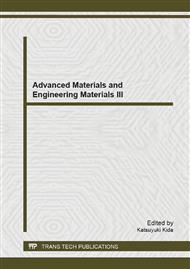p.519
p.524
p.528
p.533
p.539
p.543
p.550
p.554
p.558
Effect of Annealing on Conductivity Type of Nanocrystalline ZnO Films Fabricated by RF Magnetron Sputtering
Abstract:
Nanocrystalline ZnO films were deposited by rf reactive magnetron sputtering. The films were characterized by reflection high-energy electron diffraction, X-ray photoelectron spectroscopy and gas sensing measurements. It was found that annealing of the film enabled to invert its conductivity type. Thus, as-deposited ZnO film showed p-type conductivity while annealed film showed n-type conductivity behavior. The p-and n-type conductivities of the films obtained by gas sensing measurements have been confirmed by XPS results. The gas sensing properties of the films were investigated upon exposure to 10 ppm of NO2 at 22°C and exhibited good sensitivity with fast response and recovery times. The sensor response to NO2 was found to be profoundly dependent on the conductivity behavior of the film.
Info:
Periodical:
Pages:
539-542
Citation:
Online since:
February 2014
Price:
Сopyright:
© 2014 Trans Tech Publications Ltd. All Rights Reserved
Share:
Citation:


